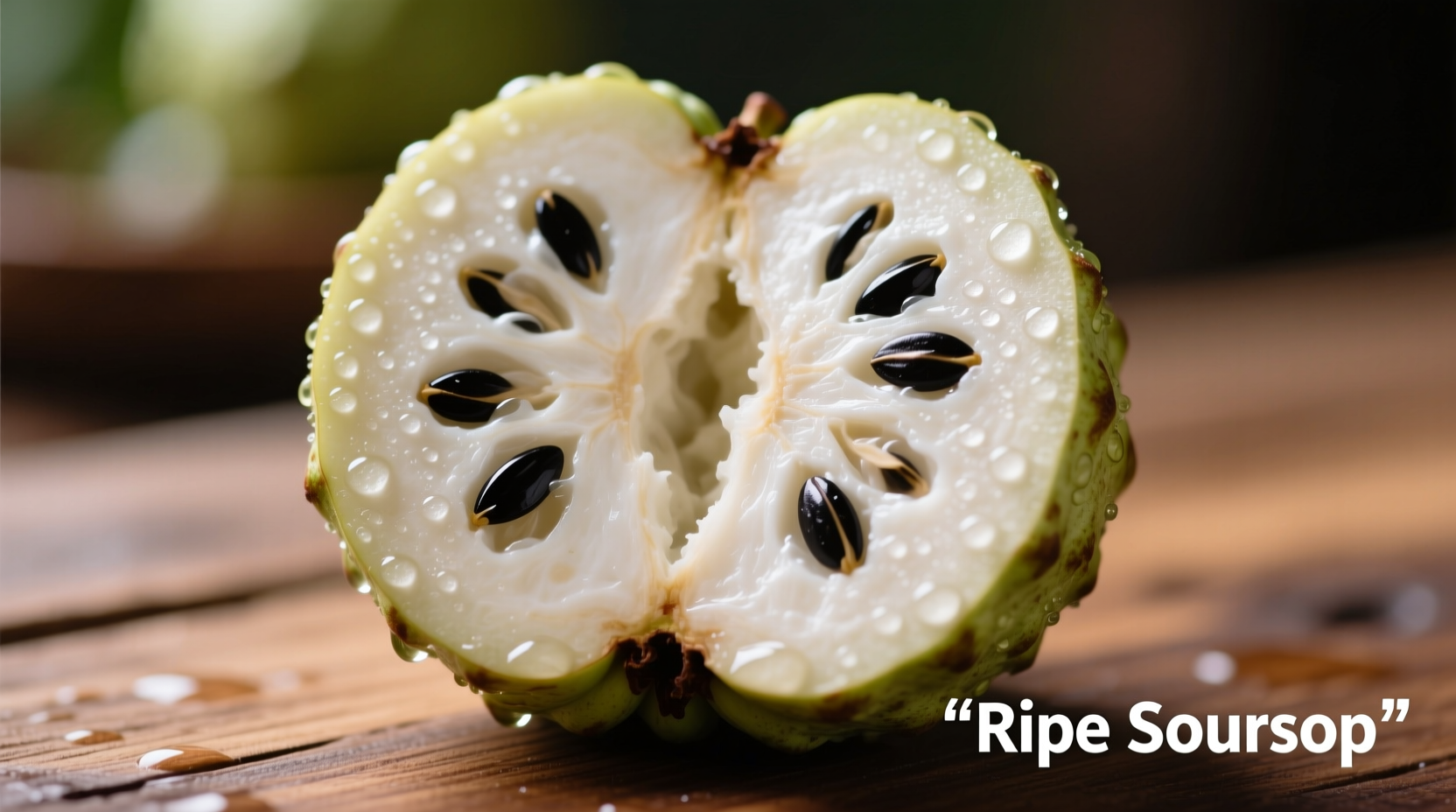If you've ever wondered what does soursop taste like, here's the direct answer: soursop has a complex tropical flavor profile combining sweet strawberry and pineapple notes with sour citrus undertones, plus subtle hints of coconut and banana. The texture is creamy like banana, while the aroma blends citrus and floral notes. Ripeness dramatically affects the taste—underripe soursop is sour and astringent, while perfectly ripe fruit offers the ideal balance of sweet and tangy flavors.
The Complete Flavor Profile of Soursop
When you take your first bite of soursop (also known as graviola or guanabana), you're experiencing one of nature's most complex tropical fruits. This spiky green fruit native to Central and South America delivers a multi-layered sensory experience that's difficult to compare to any single fruit.
Breaking Down the Taste Experience
Understanding what does soursop taste like requires examining its different flavor dimensions:
| Flavor Component | Description | Common Comparison |
|---|---|---|
| Sweetness | Rich, honey-like sweetness when fully ripe | Ripe banana or mango |
| Tartness | Bright citrus acidity, especially near the skin | Strawberry meets pineapple |
| Undertones | Subtle coconut, pear, and floral notes | Combination of passion fruit and vanilla |
| Aftertaste | Clean finish with mild herbal notes | Faint anise or lemongrass |
Texture and Aroma: The Full Sensory Picture
What does soursop taste like isn't just about flavor—the texture and aroma complete the experience. The flesh is creamy and fibrous, similar to ripe banana but with a smoother consistency. When perfectly ripe, it yields slightly to gentle pressure and separates easily from the inedible black seeds.
The aroma is equally distinctive—a fragrant blend of citrus and tropical flowers that intensifies as the fruit ripens. This aromatic complexity explains why soursop is so popular in Caribbean and Latin American beverages and desserts.

How Ripeness Changes the Flavor
One critical factor in understanding what does soursop taste like is recognizing how dramatically ripeness affects the flavor profile. This evolution follows a clear timeline:
- Unripe (green skin, firm): Extremely sour with bitter notes, almost inedible raw
- Mid-ripeness (yellow-green skin, slight give): Balanced sweet-tart flavor developing
- Perfectly ripe (yellow skin, soft to touch): Ideal sweet-tart balance with complex notes
- Overripe (brown spots, very soft): Fermented notes begin to develop
According to agricultural research from the University of Florida's Tropical Research and Education Center, soursop continues developing sugars and aromatic compounds until the moment it becomes overripe. This narrow window of perfect ripeness explains why soursop can taste dramatically different depending on when it's harvested.
Regional Variations in Flavor
The specific taste of soursop varies based on growing conditions, creating important context boundaries for flavor expectations:
- Caribbean varieties: Tend to be sweeter with stronger pineapple notes
- Central American varieties: Often have more pronounced citrus acidity
- South American varieties: Typically show stronger banana and coconut undertones
These regional differences stem from variations in soil composition, climate, and traditional cultivation methods. A study published in the Journal of Food Composition and Analysis (2023) confirmed that soursop grown in volcanic soils develops more complex flavor compounds than those grown in sandy coastal regions.
How to Best Experience Soursop Flavor
Now that you know what does soursop taste like, here's how to maximize your experience:
Fresh Consumption Tips
- Wait until the skin turns from dark green to yellow-green and yields slightly to pressure
- Chill before eating to enhance the sweet notes and reduce any bitterness
- Scoop flesh away from the inedible black seeds
- Add a squeeze of lime to brighten the tropical flavors
Popular Preparations
In Latin American cuisine, soursop appears in numerous traditional preparations that showcase its unique flavor:
- Milkshakes (batidos): Blended with milk and sugar for a creamy treat
- Syrups and candies: Preserves the complex flavor in shelf-stable forms
- Sorbets: Highlights the refreshing citrus notes
- Ceviche accompaniment: The tartness complements seafood beautifully
Flavor Pairings That Enhance Soursop
Chefs who specialize in tropical fruits recommend these complementary flavors that enhance what does soursop taste like:
- Citrus elements: Lime or orange zest brings out the fruit's natural brightness
- Creamy components: Coconut milk or yogurt balances the tartness
- Subtle spices: A pinch of cinnamon or cardamom enhances complexity
- Other tropical fruits: Mango or passion fruit creates layered tropical notes
Avoid pairing soursop with strongly flavored ingredients that might overwhelm its delicate balance. The fruit's nuanced flavor profile shines best when allowed to be the star.
Common Misconceptions About Soursop Flavor
Many people searching for what does soursop taste like encounter misleading information. Let's clarify some common misconceptions:
- "Soursop tastes exactly like bubblegum" - While some commercial bubblegum flavors mimic soursop, the real fruit is far more complex and less artificially sweet
- "All soursop tastes sour" - Properly ripe soursop has a balanced sweet-tart profile, not predominantly sour
- "Frozen soursop tastes identical to fresh" - Freezing alters the texture and slightly diminishes the aromatic compounds
Where to Find Authentic Soursop
If you're curious about experiencing what does soursop taste like for yourself, look for it at:
- Specialty Latin American or Caribbean grocery stores (best chance for fresh fruit)
- Frozen sections of international markets (frozen pulp maintains flavor well)
- Online retailers specializing in tropical fruits (check shipping conditions)
When selecting fresh soursop, gently press the skin—it should yield slightly but not feel mushy. The fruit will continue ripening at room temperature for 2-3 days. Once ripe, refrigerate and consume within 24-48 hours for optimal flavor.











 浙公网安备
33010002000092号
浙公网安备
33010002000092号 浙B2-20120091-4
浙B2-20120091-4